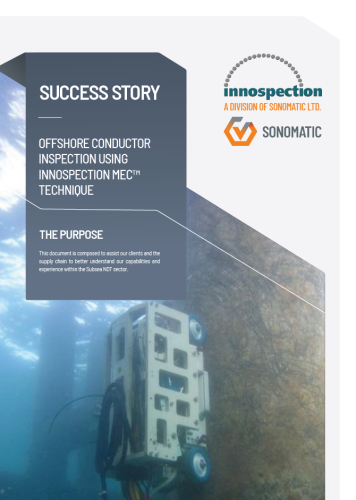A client required an inspection of some conductors on unmanned wellhead towers offshore in the GCC Region. Failures of conductors due to external or internal corrosion, limit the structural integrity of these aging assets.
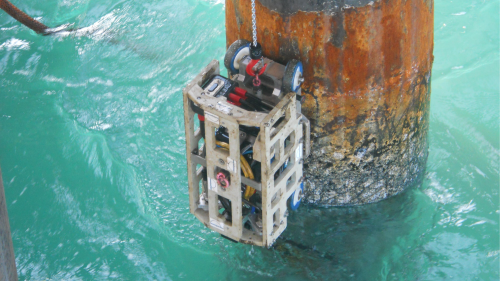
Offshore Conductor Inspection using Innospection MEC™ Technique
Main Challenge

For a meaningful integrity assessment, a fast inspection technique with little to no preparation was sought. The location for inspection was from below the Christmas tree, through the splashzone, down to the seabed.
The MEC™ inspection would detect external and internal wall loss by localized or general corrosion, supported with 0° corrosion mapping, to offer the client an understanding of the external/internal casing wall and the expected condition, which is critical for the potential loss of hydrocarbons.
The client compared and tested various techniques to identify the most suitable technique to inspect through the splash zone area down to three meters below water. The splash zone is an extremely critical location on conductors, with severe external corrosion in some cases. The inspection was conducted from the Christmas tree configuration down to the seabed, navigating through a thick layer of marine growth and scale around the splashzone region. The conductor thickness was 22 mm for the first 2-3 sections and then increases up to 28 mm in the last section.
Value for Client
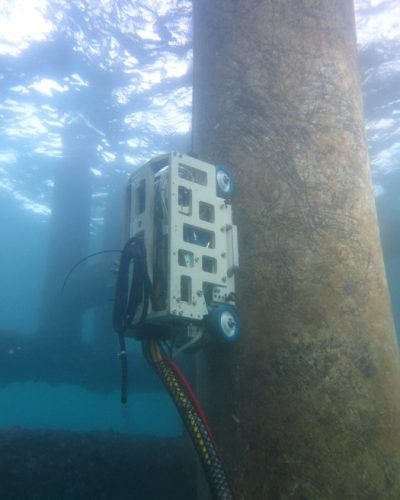
- Fast Reliable Inspection technique, with full coverage.
- Providing a high quality inspection data that can be converted into Matrix format showing the data in high resolution -2mm steps-that can be used for FFS.
- It can differentiate between internal and external defects.
- Technique is not affected by light marine growth and requires less preparation.
- Topside pitting specially at the splash zone area will not affect the capability of detection for other indications like in other NDT techniques.
- MEC™ Crawlers have additional HD camera for visual inspection.
- MEC™ Crawlers can be equipped with additional UT sensor array, other techniques and cleaning head if required.
Outcome
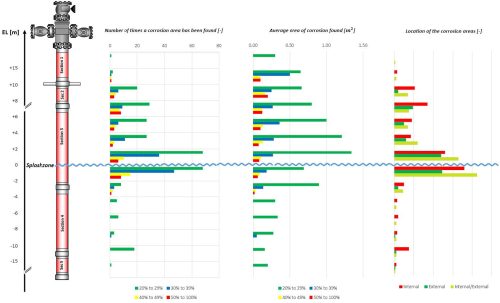
After Comparing MEC™ technique to other inspection techniques used by client to inspect the conductors the client found out that:
- MEC™ can provide a fast inspection with full coverage of the conductor from the top
(Christmas tree) to sea bed, the inspection of a 30m long conductor can be completed in one shift. - MEC™ can provide a separate high resolution report for the external and internal conditions of the Conductor.
- MEC™ data can be transferred into a matrix data report format and be used for FFS which is very important for the client.
- MEC™ does not require extensive cleaning to collect the data, also can measure external and internal pitting without any issues in the splash zone and other areas.
- MEC™ detections capabilities and sensitivity allows it to detect general corrosion on both sides of the inspection surface and smaller indications like isolated pitting.
Comparison Conclusion
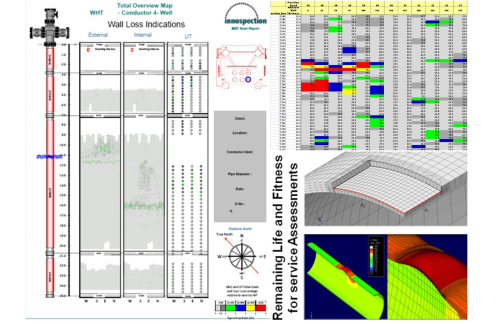
Comparison Conclusion done between MEC™-PEC-LRUT-Manual UT
MEC™ provides the best results out of 4 proposed NDT techniques for inspection of well conductors for the following reasons:
- Full volumetric coverage is recommended, particularly in splash zone.
- Continue the scan initially to 3m below the sea level. Providing no corrosion is detected, assume CP provides appropriate protection.
- The decision on extending the scope of inspection will be made upon assessment of initial results.
- Smaller error band in the data will provide more accuracy during the assessment and less conservative risk results.
Where surface condition allows, LRUT can also be used to assess corrosion in blind areas (under vertical hangers, supports, etc.)

